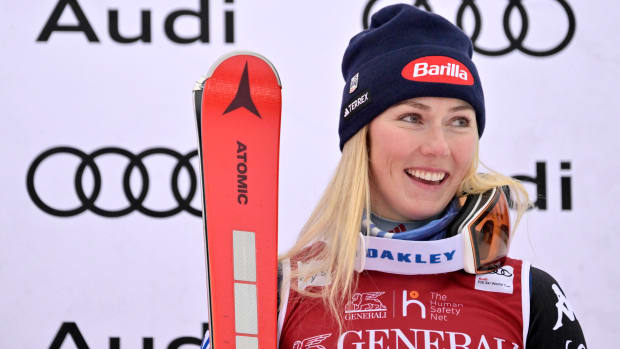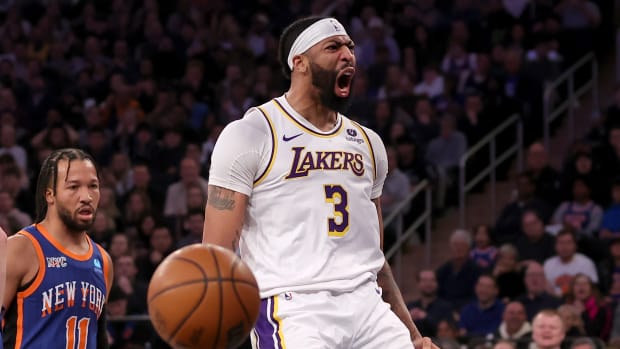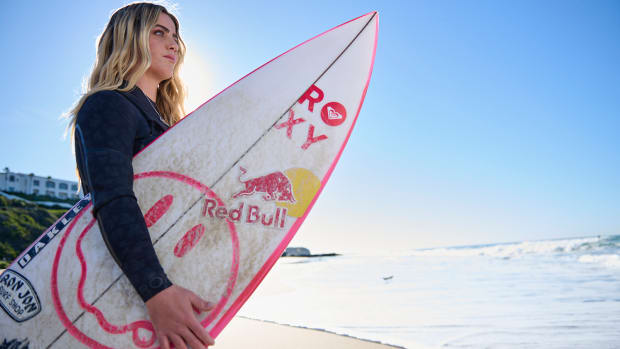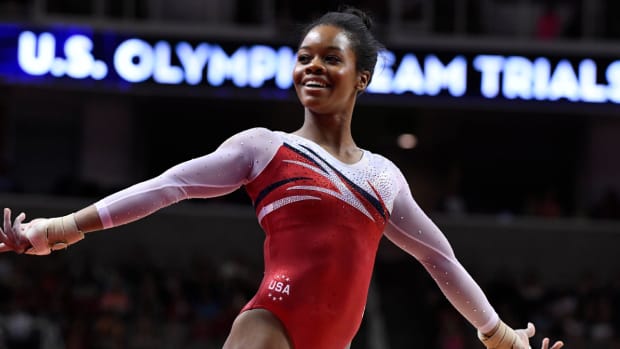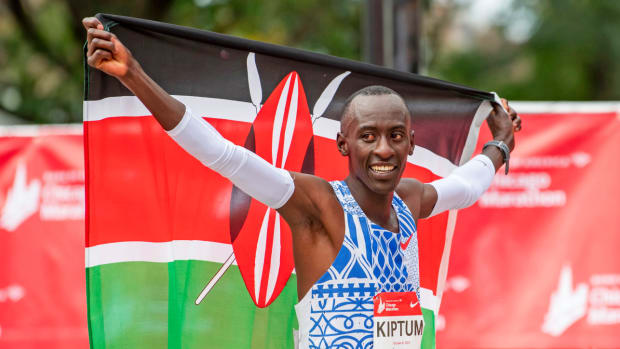U.S. women's hockey secures 3-1 win over improved Finland squad
SOCHI -- It took no time -- well, actually, 53 seconds -- for the U.S. women’s hockey team to make its first statement of these Olympic Games.
The reigning world champions have come to Sochi with a singular goal: It’s gold or bust. No distractions or obstacles will get in their way. So instead of walking in Friday’s Opening Ceremony, for instance, they stayed in, watching the show on television in their team-issued uniforms.
“It’s a tremendous honor to be able to walk with the rest of Team USA, and we realize that we are not the only sport in this competition,” U.S. winger Hilary Knight said. “But at some point you have to realize how much better of an opportunity it is to represent your country [by] being fresh the next day.”
Knight was nothing if not fresh Saturday afternoon, scoring early in Team USA’s 3-1 win over Finland. Capitalizing on a turnover in the U.S.’s offensive zone thanks to a poke check from Amanda Kessel, Knight snapped a laser beam shot past Finnish goalie Noora Raty just 53 seconds into the game. One shot, one goal.
These Sochi Games, however, represent a sort of second shot for Knight, a 24-year-old forward from Hanover, N.H. Four years ago, as the youngest member of Team USA in Vancouver, she was hailed a preternaturally talented scorer with big presence and a hard shot. But during that tournament, she was also ailing from a lower body injury.
Though she played all five games and managed eight points in Vancouver, Knight was limited to just one goal in the tournament, a second-period score to put the U.S. up 5-0 against Finland in their final group game. She was held to just two shots in Team USA’s loss to Canada in the final.
Knight may still remember winning a silver medal in Vancouver as one of her most memorable achievements, but she and Team USA will expect much more from her here in Sochi. In her first game, she delivered.
“Hilary had a tremendous game for us today,” U.S. head coach Katey Stone said. “She was in the right place at the right time many, many times.”
Aside from scoring in the first minute, Knight also assisted on the U.S.’s second goal and led the team with 27 shifts, logging more than 22 minutes of ice time, and eight shots.
And how about those shots? The 5-foot-11 forward’s hard and quick release is a prime illustration of how much the women’s game has grown -- not just since the first women’s Olympic tournament in Nagano in 1998 but even since Vancouver.
Four years ago, the U.S. and Canada outscored their opponents 86-4 in four games. The laughably lopsided scoring led some -- even former IOC president Jacques Rogge -- to question whether a sport with such competitive imbalance belonged on the Olympic program. A new format tweak, which ensures the bottom two teams will avoid a humiliating loss against the U.S. or Canada, helps the problem of wildly lopsided scores, but so does the general improvement of teams outside North America.
At Shayba Arena on Saturday, the quality of play all around was noticeably better than in Olympics past. The pace was quick, the skill apparent. Though the game is still dominated by the two North American powers, teams like Finland and Switzerland don’t look completely outmatched against them anymore.
In a spirited third period Saturday, Finland put up eight shots and scored a power play goal off a slick pass by Michelle Karvinen off the half boards to Susanna Tapani, who went backdoor on USA goalie Jessie Vetter late in the game.
Finland’s goalie, Raty, is arguably the best in the world and has stolen games almost singlehandedly. She made 58 saves in a 3-1 win over the U.S. at the Four Nations Tournament back in November, and she backstopped the Minnesota Gophers to back-to-back National Championships in 2012 and ’13, the latter a cap to a perfect 38-0 season. After getting beat on Knight’s wicked shot Saturday, Raty made 40 saves, only letting in a couple of goals off lucky bounce plays.
This is to say that skill exists outside of North America, yes, but it is still the most evident in the U.S. and Canada and on the sticks of players like Knight. The greater goal may well be to grow the game -- and it has grown considerably in 16 years -- but for these two weeks at least, there is no greater goal for Team USA. It’s gold or bust.

